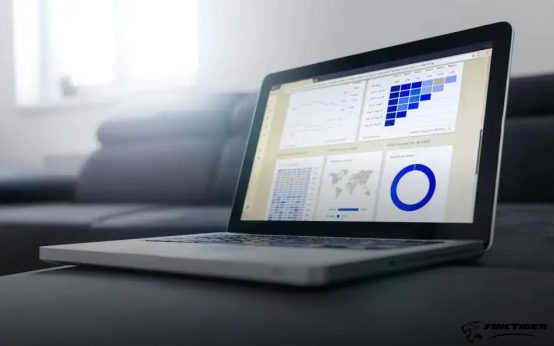Struggling to pay off debt can be overwhelming. Discover how the Snowball and Avalanche methods can help you regain control of your finances. By applying these strategies, you can effectively manage and eliminate your debt, paving the way to financial freedom. Each method offers unique advantages. In the following sections, we will explore these techniques so you can choose the best approach for your situation.
Understanding Debt Payment Strategies
When delving into debt payment strategies, it’s essential to grasp the fundamental techniques that can help you efficiently manage and ultimately eliminate debt. Two popular strategies are the Snowball and Avalanche methods, each offering distinct advantages depending on your personal financial situation.
The Snowball Method involves focusing on paying off the smallest debts first. By quickly eliminating these, you gain a sense of achievement and momentum, motivating you to continue tackling your other debts. This psychological boost can be crucial for maintaining long-term commitment to your debt repayment journey.
On the other hand, the Avalanche Method emphasizes minimizing the total interest paid over time. This method advises you to target the debt with the highest interest rate first, which can result in saving significant amounts of money in the long run. While it might take longer to see an actual debt disappear, the overall savings can be substantial.
Deciding between these two strategies depends on individual factors such as your financial goals, the types of debts you have, and your personal preferences. Each method has its unique benefits, allowing you to tailor your approach to what suits you best, ultimately leading you down the path to becoming debt-free.
The Snowball Method Explained

The Snowball Method is a popular debt payment strategy that focuses on paying off your smallest debts first, regardless of interest rate. By doing this, you can quickly knock out smaller balances, providing a psychological boost and a sense of accomplishment. As each small debt is paid off, the money that was used to pay for it is then rolled into paying the next smallest debt.
How It Works
Here’s a step-by-step guide to implementing the Snowball Method:
- List Your Debts: Start by listing all your debts from smallest to largest balance.
- Minimum Payments: Continue making minimum payments on all debts except the smallest.
- Focus Extra Payments: Direct any extra money to the smallest debt until it is paid off.
- Roll Forward: Once a debt is cleared, take the amount you were paying and direct it toward the next smallest debt.
By continuing this process, you create a snowball effect, where the amounts you are able to pay towards debts continue to grow, making it easier to pay off even larger debts over time.
Psychological Benefits
The Snowball Method is particularly beneficial for individuals who need quick wins to stay motivated. Many find that paying off small debts first helps them achieve momentum, making it easier to stay committed to debt repayment over time.
While this does not take into account the interest rates, which the Avalanche Method does, it can be a useful strategy for those struggling to keep motivated on their journey to becoming debt-free.
The Avalanche Method Unveiled
The Avalanche Method is one of the two main strategies for paying off debt, the other being the Snowball Method. Unlike the Snowball approach, which focuses on eliminating the smallest debts first, the Avalanche Method prioritizes debts with the highest interest rates. This method can save you money on interest payments over time and may reduce the repayment period.
How It Works: List all of your debts and their corresponding interest rates. Direct extra payments toward the debt with the highest interest rate while maintaining minimum payments on the rest. Once the highest interest debt is paid off, move to the next highest, and repeat the process.
This method is advantageous for those looking to minimize interest costs. However, it requires discipline and may lack the quick psychological wins provided by the Snowball Method, which some people find motivating.
Benefits: The Avalanche Method minimizes interest costs and can result in substantial savings, especially with high-interest debts such as credit cards.
Challenges: It may take longer to see progress initially, which can be demotivating for some. Commitment is crucial, as the tangible results are not as immediate as with the Snowball Method.
Choosing the Best Method for You

When deciding on the best method to pay off your debt, it’s essential to consider personal financial habits and psychological factors. Both the Snowball and Avalanche methods have their unique benefits, so understanding what works for you is key.
Evaluate Your Financial Situation
Start by assessing your current debt situation. Make a list of all outstanding debts, their interest rates, monthly payment amounts, and how much you owe. Knowing this will help you determine which method suits your needs better.
Snowball Method Enthusiasts
If you are motivated by quick wins and need to see progress fast, the Snowball method can be more suitable for you. Paying off smaller debts first can provide a morale boost and increase momentum. It’s a psychological payoff that encourages the continuation of debt reduction efforts.
Avalanche Method Advocates
Alternatively, if you’re more focused on long-term financial benefits and have the discipline to stick with it, the Avalanche method might be your best choice. By targeting the highest interest rates first, you will likely make fewer payments over time, saving money on interest.
Consider Your Behavioral Patterns
Your financial behavior also plays a crucial role. Are you someone who needs to see immediate results, or can you be strategic about saving money in the long run? Align your choice with your behavioral patterns for better adherence and results.
Flexibility and Adjustments
Remember, you can switch methods if one doesn’t seem to be working for you. The critical point is to have a plan and stick to it, but remain flexible to make adjustments as necessary.
By weighing these aspects carefully, you can choose the strategy that aligns with your lifestyle and financial goals.





